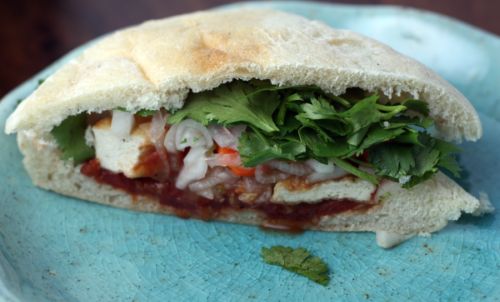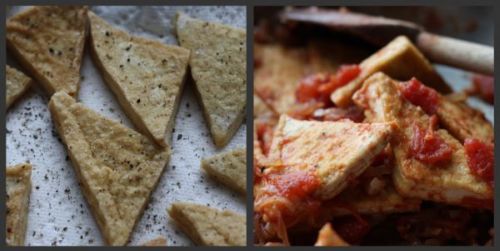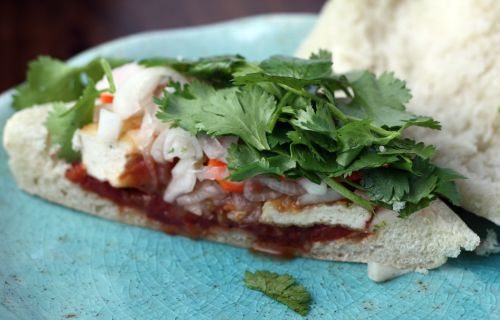
I may be the last person in the food blogging world, but I have joined a CSA. It’s something I have been meaning to do for years but didn’t for a variety of reasons. One of those reasons is the overwhelming number of choices to make. We are fortunate to have an abundance of farmers’ markets and an abundance of farmers in the Pacific Northwest and choosing one farm from which to get magnificent produce…it was too much for me. Give me a few good choices and I’m very good at making decisions. Give me too many choices and I shut down.
A few weeks ago I decided enough was enough and took the plunge with Nash’s Organic Produce. One of the many reasons I chose them is that you get a box from them from June through December. Spring is usually a cold and rainy season for us, so if you were to visit a farmers’ market in May, what you would find is a lot of lettuce and some apples. Eventually all manner of peas make their way to the stalls and then there are the berries which are truly glorious and start late June. But for me, the really exciting stuff doesn’t start until August and even September. That is why I am thrilled that we have weeks and weeks ahead of us to get incredible quantity, quality, and variety from Nash’s.
Oh, but how to use all that amazing produce? It’s a good exercise for me actually. After years of menu planning for my clients and having my shopping list done every Friday, it’s nice to have some freedom and some creativity with what I cook. It’s also a challenge but a good challenge.
This week, the first thing I saw when I opened the box was bok choy. Asian food was a no brainer. There were also a couple of green peppers in there so I immediately thought of green curry. I turned to my trusted Real Vegetarian Thai cookbook and proceeded to make my own green curry paste and get some tips on how to turn it into dinner. There is a recipe for a green curry dish in there, but it is pretty spartan so I made it my own.

Thai Curry previously: Winter Vegetables with Thai Red Curry
UPDATE: Based on some of the comments, I have a few things to update here. If you are not familiar with the term, a CSA is a share in a farm (it stands for Community Supported Agriculture). You pay them money up front and then you get a box of produce from that farm for a given number of weeks. Every farm handles it differently but most do not allow you to choose what you get. It’s like getting a little surprise Christmas box each week. In the curry recipe, do not hesitate to use “lite” coconut milk. I almost always use the lower fat lower calorie stuff in my cooking.
Thai Green Curry Paste
Adapted from Real Vegetarian Thai
Makes about 1 cup
If you are afraid of spice, do not fear, this paste isn’t really hot. I recommend scraping the seeds and membranes out of the chiles to keep things under control. If you love heat, leave the seeds in all or half the chiles.
5 fresh green serrano chiles or 4 fresh green jalapeño chiles
1 tbsp. whole coriander seeds
1 tsp. whole cumin seeds
3 stalks lemongrass
1/2 cup coarsely chopped cilantro leaves and stems
1/4 cup coarsely chopped shallots
2 tbsp. coarsely chopped garlic
1 tbsp. coarsely chopped fresh ginger
Zest of 1 lime
1 tsp. salt
1/2 tsp. ground black or white pepper
Stem the chiles, scrape out the seeds and membranes, and chop them coarsely. Set aside. In a small skillet over medium heat, dry-fry the coriander seeds until they darken a shade or two, shaking the pan or stirring often, 2-3 minutes. Tip out onto a saucer. Toast the cumin seeds in the same way, until they darken and release their rich aroma, 1-2 minutes. Add to the saucer along with the coriander, then grind the spices to a fine powder in a mini food processor or coffee grinder. Set aside. You can substitute the same amount of ground spices, dry-frying them together for a minute or two and stirring often to prevent burning.
To prepare the lemongrass, trim away and discard any root section below the bulb base, and cut away the top portion, leaving a stalk about 6 inches long, including the base. Remove any dried, wilted, and yellowed leaves. Finely chop the stalk.
Combine the lemongrass, the chopped chiles, and the ground toasted spices with the remaining ingredients in a blender for mini processor and grind them to a fairly smooth purée, stopping often to scrape down the sides and adding a few tablespoons of water as needed to move the blades. Transfer to a jar, seal airtight, and store at room temperature for up to 1 day, or refrigerate for up to 1 month.
Thai Green Curry with Zucchini and Peppers
Dana Treat Original
Serves 3-4
You can, of course, use jarred curry paste here. If you are vegetarian, just be sure to check the label – sometimes they contain shrimp paste. Thai Kitchen’s brand is decent. Jarred paste tends to be very strong, so use a small amount and add more if you need to.
Peanut oil
1 large shallot, cut into thin rings
1 large green pepper, cut into 1″ pieces
2 medium zucchini, ends trimmed, quartered, and sliced into 1″ pieces
12 oz. extra firm tofu, cut into 1″ cubes
1 -5oz. can sliced bamboo shoots, drained
1 -14 oz. can coconut milk
2-3 tbsp. green curry paste
1 tbsp. brown sugar
1 tbsp. soy sauce
4 stalks of a large bok choy, or 2 baby bok choys, stalks thickly sliced and leaves coarsely chopped
1/4 cup cilantro leaves, chopped
Heat a large skillet or Dutch oven over medium heat. Add just enough peanut oil to coat the bottom, then add the shallots. Allow to cook for 3-4 minutes, until just beginning to brown. Add the green peppers and cook, stirring often, for 8-10 minutes, or until the peppers are very soft and starting to brown. Add the zucchini, bamboo shoots, and tofu and cook until the zucchini is soft, about another 5 minutes.
Meanwhile, pour about 1/3 of the coconut milk into a small saucepan and heat just until hot. Stir in the curry paste and, using a spoon, mash it into the coconut milk. Once it is combined well, add it to the vegetables and tofu, stir well, then add the rest of the coconut milk to the pot. Add the brown sugar, the bok choy stems, and the soy sauce. Stir everything together, lower the heat, and allow to cook until the flavors are well blended, about 15 minutes. A few minutes before serving, stir in the cilantro and the bok choy leaves. Allow to wilt slightly. Serve over jasmine rice.

 Share
Share


